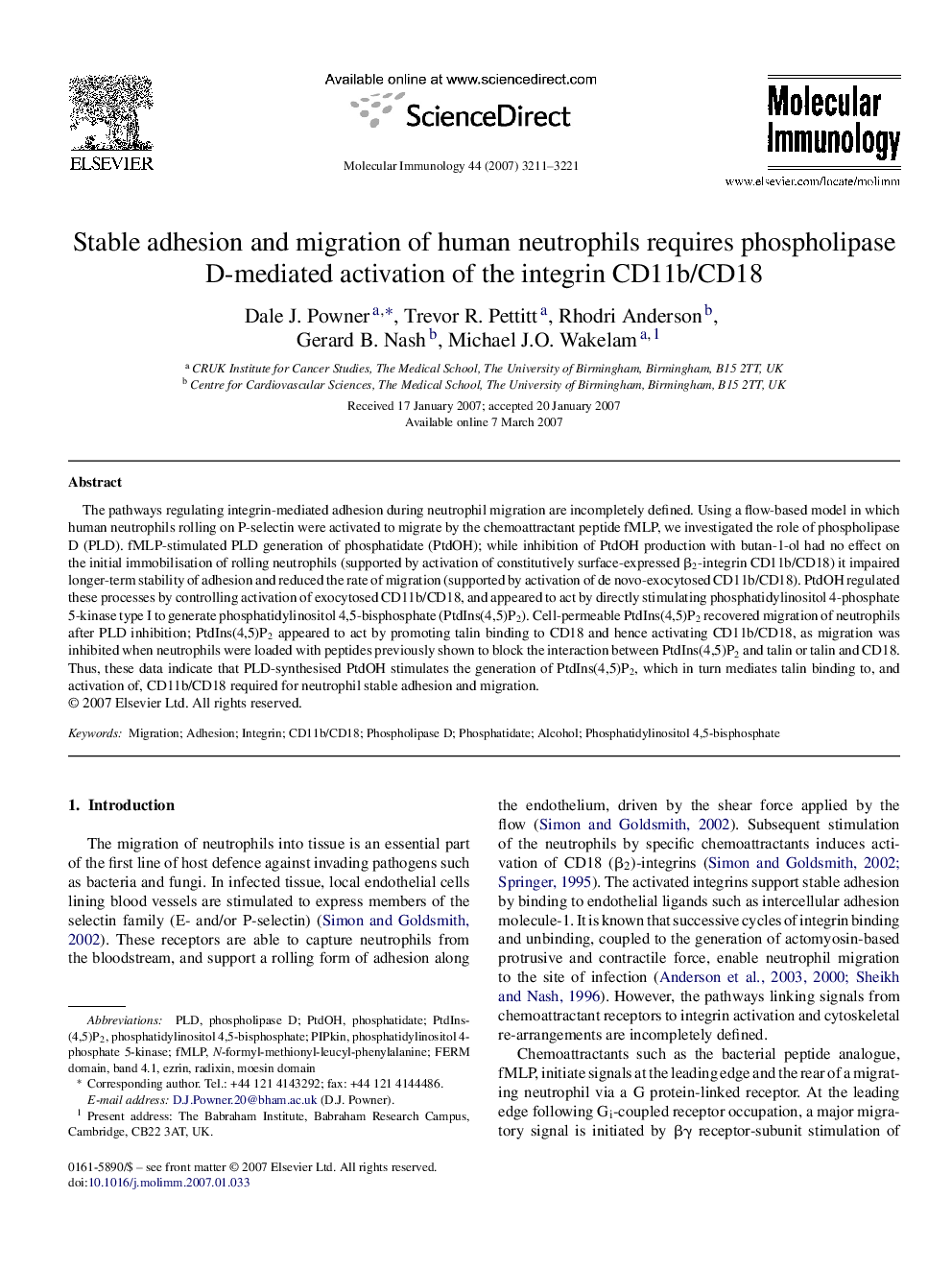| Article ID | Journal | Published Year | Pages | File Type |
|---|---|---|---|---|
| 2833277 | Molecular Immunology | 2007 | 11 Pages |
The pathways regulating integrin-mediated adhesion during neutrophil migration are incompletely defined. Using a flow-based model in which human neutrophils rolling on P-selectin were activated to migrate by the chemoattractant peptide fMLP, we investigated the role of phospholipase D (PLD). fMLP-stimulated PLD generation of phosphatidate (PtdOH); while inhibition of PtdOH production with butan-1-ol had no effect on the initial immobilisation of rolling neutrophils (supported by activation of constitutively surface-expressed β2-integrin CD11b/CD18) it impaired longer-term stability of adhesion and reduced the rate of migration (supported by activation of de novo-exocytosed CD11b/CD18). PtdOH regulated these processes by controlling activation of exocytosed CD11b/CD18, and appeared to act by directly stimulating phosphatidylinositol 4-phosphate 5-kinase type I to generate phosphatidylinositol 4,5-bisphosphate (PtdIns(4,5)P2). Cell-permeable PtdIns(4,5)P2 recovered migration of neutrophils after PLD inhibition; PtdIns(4,5)P2 appeared to act by promoting talin binding to CD18 and hence activating CD11b/CD18, as migration was inhibited when neutrophils were loaded with peptides previously shown to block the interaction between PtdIns(4,5)P2 and talin or talin and CD18. Thus, these data indicate that PLD-synthesised PtdOH stimulates the generation of PtdIns(4,5)P2, which in turn mediates talin binding to, and activation of, CD11b/CD18 required for neutrophil stable adhesion and migration.
